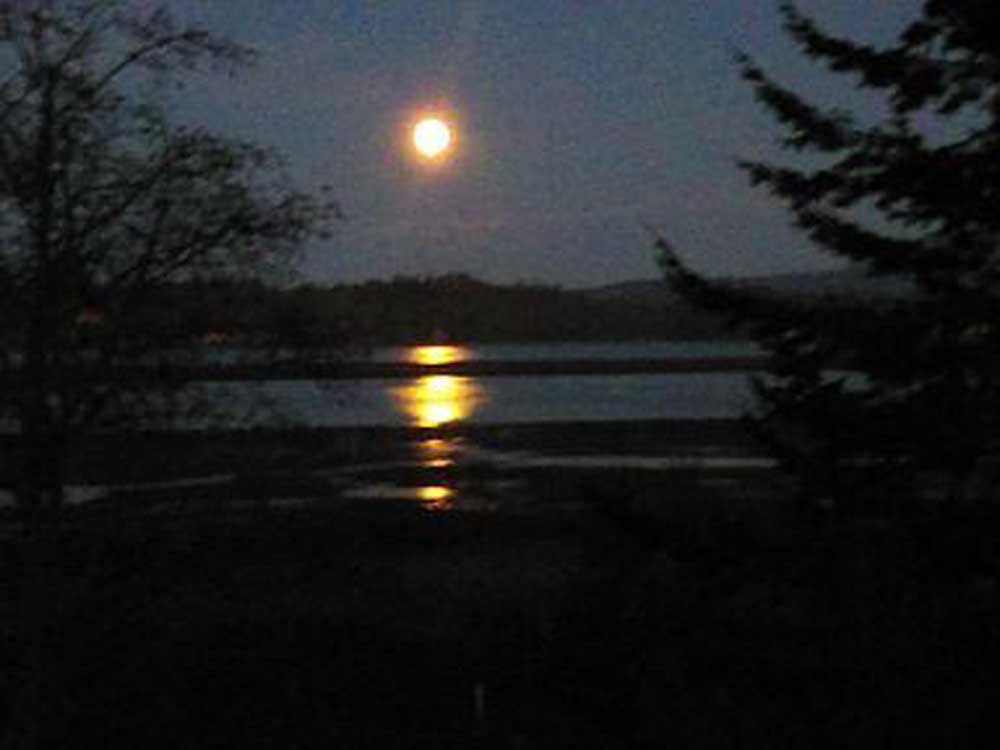Elementary, my dear… It’s January! But let’s not cry “Wolf Moon! Wolf Moon!”
Published 7:40 am Monday, January 1, 2024

- By any name in any language, the full moon over Willapa Bay is a glorious sight to behold!
There was a time when I thought we identified the moon by its shape — crescent, half, or full, waxing or waning — often noted on our calendars and certainly in the Old Farmer’s Almanac. The only specific name I remember was the Harvest Moon which comes in the fall, usually in September. It’s the full moon nearest the autumnal equinox and hearkens back to a time before electricity when farmers depended on the moon’s light to bring in their crops from the fields.
Trending
And once in a blue moon, there were two moons in a single calendar month prompting the second one to be called… a Blue Moon! The expression, itself, meaning “extremely rarely,” was coined back 1528 with references to the clergy and only recently became connected with that glorious celestial body that travels with us around the sun.
Now, with a new year upon us, we are once again in the time of the Wolf Moon. But, wait a minute! A Wolf Moon on the Washington Coast? I didn’t think we had any wolf population to speak of. Not like the early New England states whose colonial settlers picked up that Wolf Moon usage from their Algonquin-speaking neighbors. It made sense back then — January was a time when the wolves howled during the long dark nights. Like so many things in this internet age, the terminology has spread way beyond the culture it sprang from and where it made perfect sense.
I must say, though, I do like the idea of naming each month’s moon according to the outstanding seasonal characteristic we might expect. Not Algonquin wolves, though. Not here. We’d be better served by looking toward the words of our local Chinookan peoples. What were their traditional moon names, if any?
Trending
A Moon by Any Other Name…
My internet search failed me here, however — not in lack of information, but by the conflicting results of other people’s research. It was one of those “the internet giveth and the internet also confuseth” situations. Apparently, a list of moon names in Chinuk Wawa (Chinook jargon) was compiled in 1924 based upon the linguistic studies of Father Paul Le Jeune (1591-1664) He was a French Jesuit missionary, linguist, author and newspaper publisher who listed the Chinook Jargon names for the moon.
But even so, the two-and-a-half century gap between the gathering and the compiling of that list is a bit bothersome. Plus, the fact that the Salish speaking people from whom Father LeJeune collected his information were located in New France, (1534–1763), the French colonies of continental North America, then embracing the shores of the St. Lawrence River, Newfoundland, and Acadia (Nova Scotia). I’m pretty sure their Januarys were different from ours, even way back then.
But try as I might, I cannot find what our nearby Chinook neighbors called the moons of the year. So, for now, I think Father LeJeune’s list will have to do. According to him, we are now in the month of the Mid-winter Moon. The rest of the moons in order are Chinook Moon, Windy Moon, New Grass Moon, Flowery Moon, Berry Moon, Salmon Moon, Hot Weather Moon, Spawning Moon, Falling Leaves Moon, Cold Wind Moon, Winter House Moon and Deep Snow Moon.
Thirteen Moons?
I’m not so sure about that last one, although as recently as a generation ago there was often “deep snow” right here in Oysterville. But why, you may ask, did LeJeune list thirteen moons? Because, say the experts: “The moon phases actually take 29.5 days to complete which means it takes just 354 days to complete 12 lunar cycles. So, every 2.5 years or so a 13th full moon is observed within a calendar year.”
Got that? Not to worry. It’s that once in a blue moon thing. But I’m not sure where or how it would fit in with Father LeJeune’s list of thirteen moon names for each and every year. If the extra moon came in August, for instance, would the month then be part Hot Weather Moon and part Spawning Moon? And would the salmon be spawning no matter what the moon was called?
Actually, the answer to that is yes. “Spawning can occur in spring, summer, fall, or winter and depends on the salmon species.” So I found out by checking in with the cyberspace gurus. As mentioned previously, “the internet giveth and the internet also confuseth.” But no matter who calls it what elsewhere, here in the land of the Chinook, on Jan. 23 this year, it will be the Mid-winter Moon shining down on us! Howl or not — your choice!









